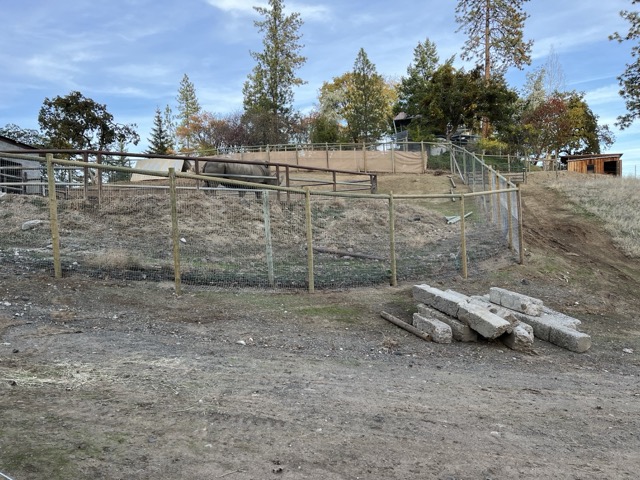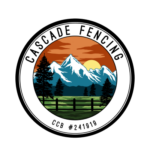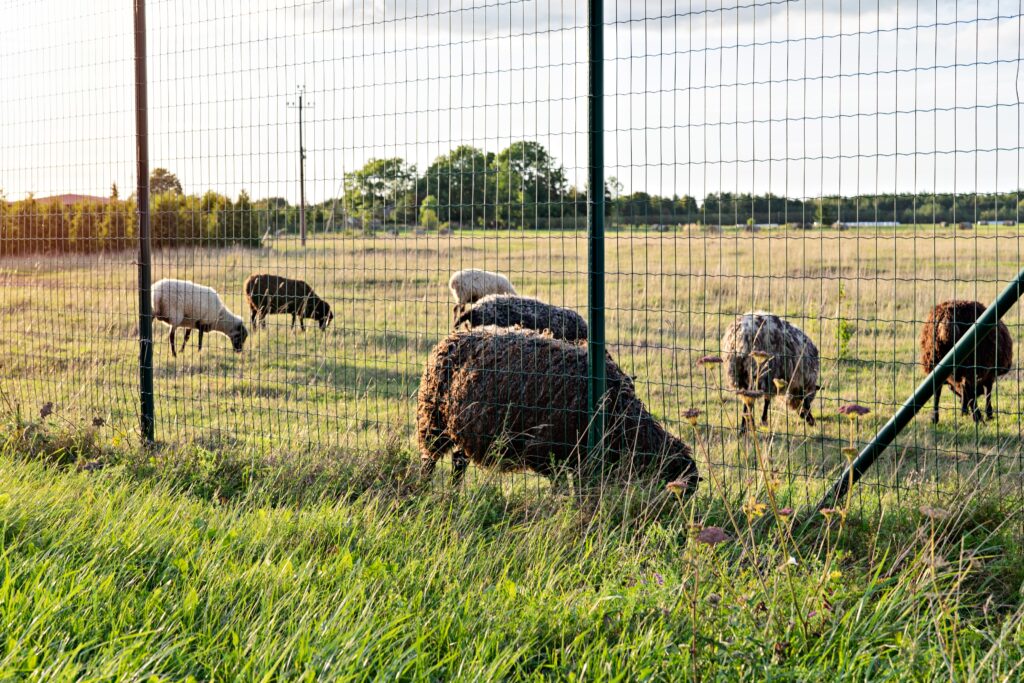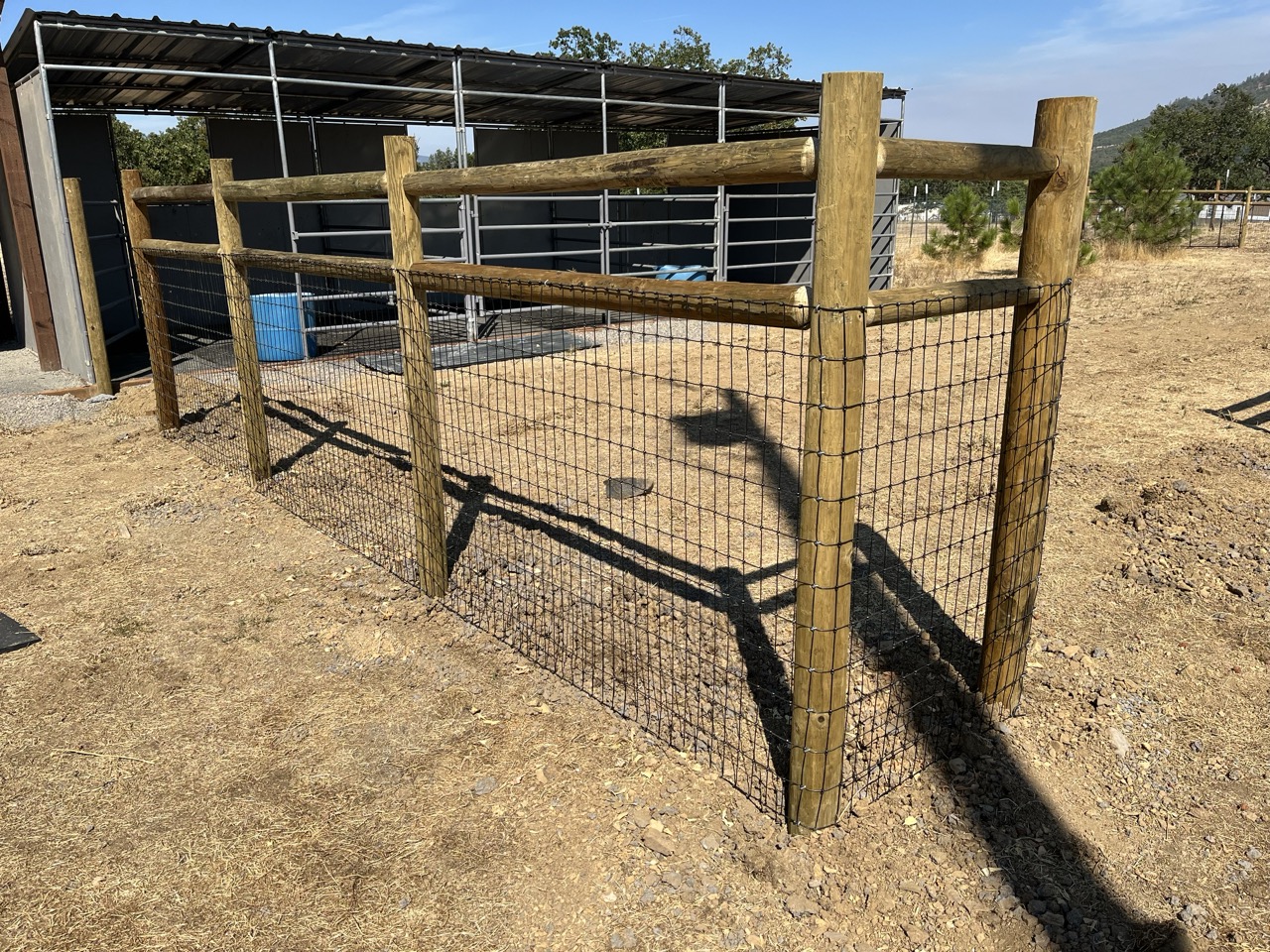Time to Upgrade Your Farm's Fencing?
A reliable fence is the backbone of any successful farm. It keeps your livestock safe, protects crops, and establishes boundaries for efficient land management. However, even the sturdiest fences eventually wear down, compromising their effectiveness. Upgrading your farm’s fencing may seem like a significant investment, but ignoring the warning signs can lead to greater costs down the road.
In this blog, we’ll explore five telltale signs that it’s time to upgrade your farm’s agricultural fencing and discuss how to choose the right fencing solution to meet your needs.

Frequent Repairs Are Draining Your Time and Money
If you find yourself constantly repairing your fence, it may no longer be cost-effective to maintain it. While all fences require occasional upkeep, frequent issues like broken posts, loose wires, or sagging sections can indicate that your fence is nearing the end of its lifespan.
Why It’s a Problem:
- Hidden Costs: Frequent repairs add up over time, often exceeding the cost of a full replacement.
- Lost Productivity: Every repair takes time away from other farm activities, reducing efficiency.
- Compromised Security: Temporary fixes may not provide the same level of protection as a new fence.
Solution:
Upgrading to a more durable agricultural fencing material, such as high-tensile wire or treated wood, can reduce the need for constant repairs. Modern materials are designed to withstand wear and tear, ensuring a longer lifespan and fewer maintenance headaches.
Livestock Are Escaping More Often
If your animals are frequently wandering off, your fence may no longer be doing its job. Livestock escapes can lead to injuries, lost animals, or property damage—both to your farm and to neighboring land.
Common Causes:
- Weak Posts or Wires: Over time, posts can rot or loosen, and wires can lose tension, creating weak spots that livestock can exploit.
- Inadequate Design: Older fences may not meet the containment needs of your current livestock.
- Environmental Wear: Harsh weather conditions like wind, snow, or rain can accelerate fence deterioration.
Solution:
For cattle, consider upgrading to barbed wire or high-tensile fencing for added strength. For smaller livestock like goats or sheep, woven wire fencing with smaller gaps can prevent escapes. Electric fencing can also be added as a secondary barrier for extra containment.
Your Fence Is No Longer Suitable for Your Needs
Farms evolve over time, and what worked for you years ago may no longer be effective. Perhaps you’ve expanded your livestock, introduced new animals, or started growing crops that require additional protection.
Examples of Mismatched Agricultural Fencing:
- A fence designed for cattle may not be secure enough for smaller, more agile animals like goats or pigs.
- A decorative fence may lack the strength needed to protect against predators or secure large livestock.
- Older fences may not meet current zoning laws or safety standards.
Solution:
Evaluate your farm’s current needs and upgrade to a fence designed specifically for your livestock or crops. For example:
- Cedar Fencing: Great for horses or decorative boundaries.
- Electric Fencing: Ideal for rotational grazing or mixed livestock.
- Woven Wire: Perfect for goats, sheep, and smaller animals. Tailored fencing ensures your property is secure and meets the demands of modern farming.
Visible Signs of Damage and Wear
The most obvious sign that it’s time to upgrade is visible damage to your fence. Over time, exposure to the elements and daily use will take a toll, leaving your fence vulnerable to failure.
Signs to Watch For:
- Rotting Wood: Wooden fences can deteriorate due to moisture, pests, or UV exposure.
- Rust or Corrosion: Metal fences, such as chain link or barbed wire, may rust over time, weakening their structure.
- Warping or Sagging: Changes in temperature and humidity can cause wood to warp and wires to sag, reducing the fence’s effectiveness.
- Leaning Posts: A leaning fence is a clear indication of foundational weakness, often due to soil erosion or rotting posts.
Solution:
For wooden fences, consider replacing them with treated cedar or composite materials that resist rot and pests. For metal fences, upgrade to galvanized or vinyl-coated options for increased resistance to rust and corrosion.
Your Fence Is Negatively Impacting Your Farm’s Productivity
An outdated or poorly functioning fence can hinder your farm’s efficiency in several ways:
- Increased Workload: Constantly repairing or monitoring your fence takes time away from other farm tasks.
- Crop Damage: Without proper agricultural fencing, animals may graze on or trample crops, leading to financial losses.
- Safety Risks: A weakened fence increases the likelihood of injuries to livestock, farmhands, or visitors.
Solution:
Investing in a modern fencing solution can streamline your farm operations and improve productivity. For example:
- Rotational Grazing: Electric fencing allows for easy pasture rotation, promoting healthier pastures and better livestock nutrition.
- Predator Protection: High-quality woven wire fencing can keep predators out, reducing stress on your animals and protecting your investment.
How to Choose the Right Fence for Your Farm
Now that you’ve identified the signs of a failing fence, it’s time to choose the best replacement. Here are some factors to consider:
1. Type of Livestock
Each type of animal has unique fencing requirements. Cattle need strong, tall fences, while sheep and goats require fencing with smaller gaps to prevent escapes.
2. Material Durability
Choose materials that can withstand the specific challenges of your farm’s environment. For example, cedar fencing is resistant to rot, while galvanized steel resists rust.
3. Budget
While it’s tempting to go for the cheapest option, investing in quality materials can save money in the long run by reducing repair and replacement costs.
4. Aesthetics
For areas visible to the public, such as driveways or entryways, consider visually appealing options like cedar or decorative fencing.
The Role of Agricultural Fencing in Rotational Grazing
Rotational grazing is a farming practice that involves dividing pastures into smaller sections and rotating livestock through them to promote healthier forage growth and better land management. The success of rotational grazing heavily depends on having the right fencing in place. Without reliable fencing, managing livestock across different grazing zones becomes challenging, and the benefits of rotational grazing are diminished.
Why Fencing Matters for Rotational Grazing
- Controlled Grazing Areas: Effective fencing allows you to limit livestock to specific sections, ensuring that pastures are grazed evenly and have enough time to recover.
- Improved Pasture Health: By preventing overgrazing in one area, fencing helps maintain the quality and productivity of your pastures.
- Livestock Safety: Temporary or permanent fences protect animals from straying into hazardous areas, such as roads or neighboring properties.
- Flexibility: Movable fencing options, such as electric fencing, provide flexibility to create new grazing zones as needed.
Fencing Options for Rotational Grazing
- Electric Fencing: Electric fencing is a top choice for rotational grazing due to its ease of installation and reconfiguration. Portable electric fencing allows you to quickly adjust grazing zones and move livestock efficiently.
- High-Tensile Wire Fencing: For more permanent solutions, high-tensile wire fencing offers durability and low maintenance. It works well as a boundary fence, complemented by electric fencing for interior divisions.
- Polywire or Polytape: These lightweight fencing materials are easy to install and ideal for temporary grazing zones. They are commonly used with electric fencing systems.
Tips for Effective Fencing in Rotational Grazing
- Plan Your Layout: Map out grazing zones and fence lines to maximize pasture use and minimize wasted space.
- Use Quality Materials: Invest in durable materials, especially for permanent fences, to reduce maintenance and replacements.
- Inspect Regularly: Check fences often to ensure they remain secure, especially in temporary setups where livestock may test boundaries.
By choosing the right agricultural fencing for rotational grazing, you can improve pasture efficiency, enhance livestock health, and optimize your farm’s productivity.
The Value of Professional Installation
DIY fencing might seem like a cost-effective solution, but professional installation ensures that your fence is built to last. Expert installers:
- Ensure Proper Tensioning: For wire fences, correct tensioning prevents sagging and reduces maintenance needs.
- Optimize Placement: Professionals understand how to position fences to maximize coverage and functionality.
- Provide Custom Solutions: Tailored designs ensure your fence meets the specific needs of your farm.
Balancing Cost and Quality
When budgeting for a new fence, consider both the upfront expense and the long-term value. Look for materials that offer the best combination of durability, low maintenance, and functionality for your farm. Investing in quality fencing not only protects your property but also saves money over time by reducing the need for repairs and replacements.
In the end, a well-built fence is an investment in your farm’s future, ensuring safety, productivity, and peace of mind.
Cost vs. Value: Why Quality Fencing Matters
When upgrading your farm’s agricultural fencing, cost is often a major consideration. While it’s tempting to choose the cheapest option, prioritizing upfront savings can lead to higher long-term expenses. Investing in high-quality fencing offers better value over time by reducing maintenance, repairs, and replacements.
Short-Term Costs vs. Long-Term Savings
Low-cost fencing materials may save you money initially, but they often come with drawbacks:
- Shorter Lifespan: Cheaper materials, like untreated wood or low-gauge wire, are more prone to weathering, decay, and damage.
- Higher Maintenance: Frequent repairs or reinforcements increase labor and material costs over time.
- Reduced Security: Inadequate fencing increases the risk of livestock escapes, crop damage, and predator access.
High-quality fencing materials, while more expensive upfront, provide:
- Durability: Cedar fencing, high-tensile wire, and galvanized steel are designed to withstand harsh conditions, ensuring a longer lifespan.
- Lower Maintenance: Premium materials require less upkeep, saving time and money.
- Enhanced Protection: Stronger fences reduce the likelihood of breaches and keep livestock and crops secure.
Upgrading Your Fence: A Worthwhile Investment
Upgrading your farm’s agricultural fencing may seem like a daunting task, but the benefits far outweigh the initial costs. A new fence can improve security, increase productivity, and protect your livestock, crops, and property. Most importantly, it gives you peace of mind, knowing your farm is running efficiently and safely.
At Cascade Fencing, we specialize in providing high-quality fencing solutions tailored to your farm’s unique needs. Whether you’re considering woven wire, barbed wire, electric fencing, or chain link fencing in Prineville, OR, our team is here to help. Contact us today for a consultation and take the first step toward a safer, more productive farm.




